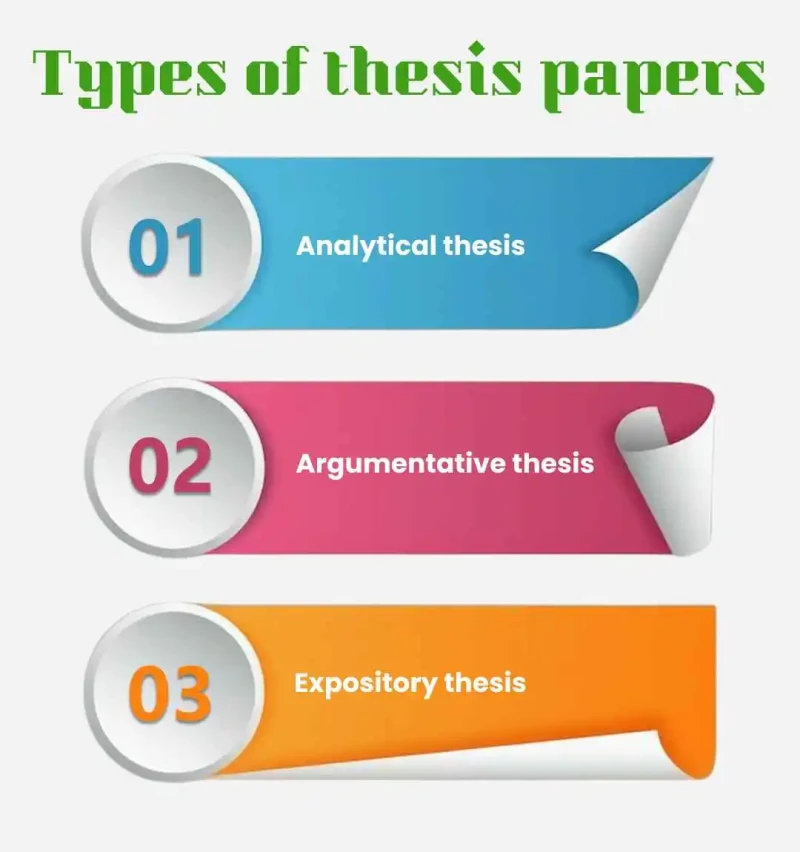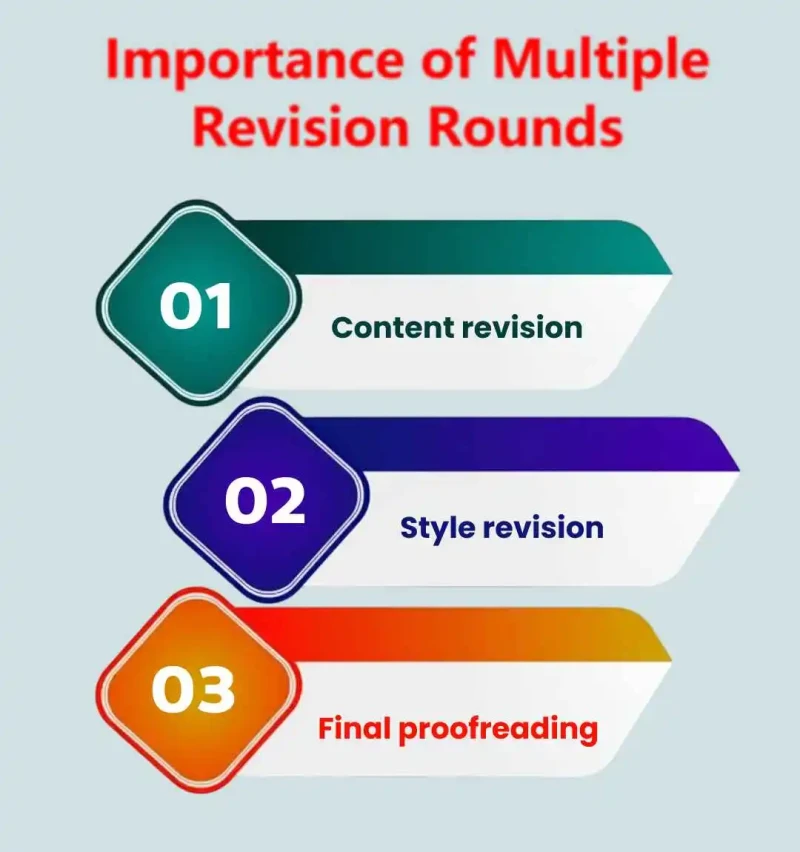
Santra
Writing a thesis paper can feel like climbing a mountain long, demanding, but incredibly rewarding once you reach the top. It’s not just another assignment; it’s your chance to prove how much you’ve learned and how well you can think, analyse, and communicate your ideas.
At first, figuring out your topic, gathering data, and putting everything into a clear structure can seem confusing. But once you know the process, it becomes much more manageable.
This guide walks you through each step from choosing a focused topic to building a strong framework and presenting your ideas clearly. By the end, you’ll know exactly how to plan, write, and refine a thesis paper that truly reflects your hard work and research skills.
Before you begin writing, you need to know what a thesis paper is and why it is important.
A thesis paper is a detailed academic document that presents your original research on a specific topic. It shows how you identify a problem, investigate it using proper methods, analyse data, and draw meaningful conclusions.
The primary purpose of a thesis paper is to demonstrate that you are capable of doing independent research, analyzing information critically, and contributing meaningfully to your field of study. In essence, it's your opportunity to demonstrate that you can think like a researcher and write about what you find out effectively.

Divides a concept, event, or text to explain or analyze its parts. The emphasis is on examining information that already exists in place of arguing a point.
Offers a particular claim and supports it with evidence and logic. This form is popular in disciplines that promote debate and critical consideration.
Informs or explains the reader on a specific subject without expressing a specific position. It is more concerned with clarifying and making sense than convincing the reader.
It’s essential to identify the type of thesis you’re writing early in the process. Doing so shapes your research approach, helps structure your arguments effectively, and ensures you maintain the appropriate tone throughout your paper.
A good, well-concentrated thesis topic is the backbone of a successful thesis. The selection of the topic will greatly influence your level of motivation, research intensity, and final quality of your work.
An excellent topic should enable in-depth examination and meaningfully advance your course of study. Shun very general topics that are hard to tackle intensively, as well as very specialized topics that might have insufficient research material.
Your topic must be closely related to your coursework and academic interests, as well as pertinent to ongoing research trends or professional use. Choosing a topic which is aligned with your field adds value to your work and can provide windows of opportunity for future research or career advancement.
Broad subjects can be intimidating and lead to fragmented research. For instance, rather than selecting "Climate Change", you might narrow your subject to “The Effect of Urban Heat Islands on Local Climate Patterns in New York City”. Narrowing a subject helps you create clear research questions and make more focused analysis.
Before finalizing your topic, check if enough data, studies, and resources are available. Make sure you can realistically complete the research within your time and budget. A strong topic isn’t just exciting it’s achievable.
It is research as the basis of your thesis. Bring out valid and applicable information that will be in your support.
Just keep in mind before you get lost in research that not all sources are created equal! Knowing the difference between a primary source, and a secondary source, will help you establish a strong, credible, and compelling thesis.
Primary Sources are your original materials or original data you collect, such as experiments, surveys, interviews, and actual observations of events, wherever you are collecting the original data to use as the raw ingredients of the research process.
Primary sources are always authentic, "raw" materials which have not been processed, analyzed, or published yet.
Secondary sources of information are interpretations, analyses, and evaluations of primary data - examples would be books, scholarly articles, etc.
Secondary sources should provide a context, a backing, and a larger overall picture of the existing knowledge around your topic.
In order to create a powerful thesis you need to strike a balance between using primary sources that contribute your own new knowledge, and secondary sources that could ground your own work in existing scholarship.
In the era of countless information, credibility is your compass. Not each supply with a satisfactory font and a .com tackle deserves a location in your thesis, some are simply educational imposters carrying glasses.
Here’s how to separate the gold from the glitter:
Use depends on tutorial databases: Start with validated structures like JSTOR, Google Scholar, ResearchGate, PubMed, or your university’s library portal. These sources are peer-reviewed and reliable.
Check the author’s credentials: Look for professionals with superior ranges or institutional affiliations no longer random bloggers with sturdy opinions.
Evaluate publication quality: Prefer peer-reviewed journals, official publishers, and latest lookup (ideally inside the final 5–10 years).
Verify citations and references: A credible supply cites different credible works. Weak or lacking citations? That’s a crimson flag.
Avoid questionable sites: Wikipedia is an excellent beginning point, no longer an ending one. Always hint claims lower back to their authentic educational sources.
In short, credibility isn’t about convenience, it’s about careful judgment. Treat your sources like evidence in a courtroom
A cluttered desk is one aspect of a cluttered thought full of messy research notes? Total disaster. Keeping your sources and notes geared up will save time, limit stress, and make writing your thesis experience much less like herding cats.
Here’s how to continue to be on top of your research chaos:
Sort by using theme or chapter: Group notes under clear categories (e.g., “Methodology,” “Findings,” “Literature Review”).
Use digital corporation tools: Platforms like Notion, Obsidian, or Evernote assist you tag, link, and shop thoughts systematically.
Keep a reference log: Maintain a record or spreadsheet with full citations and key insights for every source.
Create quick summaries: Write a 3–5 line “cheat sheet” per source, essential idea, method, and why it matters to your thesis.
Back everything up: Store your research in the cloud or an exterior power statistics loss is every thesis writer’s worst nightmare.
Tracking sources is integral to hold honesty and originality in research. It ensures that each concept or quote used is top credited to its unique author.
Keep particular notes: Record creator names, booklet dates, and web page numbers for every source.
Use quotation tools: Reference managers like Zotero or Mendeley assist prepare sources efficiently.
Paraphrase correctly: Restate thoughts in your personal phrases whilst nonetheless giving credit.
Follow citation styles: Stick to one structure (APA, MLA, or Chicago) for consistency.
Check for plagiarism: Use dependable equipment to affirm originality earlier than submission.
At a time when information is available at unprecedented levels, it is not getting any easier to expect that the sources you are using are credible. You can expect that the high-quality sources in a nice font with a .com extension should definitely not all still be sources that are reliable.
You do not want to take the chance of including academic imposters in your thesis when you can find academic sources written by experts and scholars that have been properly vetted.
Here’s how to sift through the media and help distinguish gold from glitter:
Use reputable databases of peer-reviewed or academic work: Right away, look to trusted websites such as JSTOR, Google Scholar, ResearchGate, PubMed, and, hopefully, your university's library portal. You want to focus on academic or peer-reviewed publications.
Look up the authors: Look for experts: those with PhDs or academic affiliations: not just the random blogger with strong opinions.
Examine the journal: Peer-reviewed journals, reputable publishers, recent studies (in the last 5–10 years) are better-suited for quality of research.
Citations and references: Credible sources comment on other credible sources. If there are weak citations or no citations, this is cause for concern.
You should avoid websites that do not look credible. Wikipedia can be a great starting point, but not an ending point. As a researcher, you should be linking the claim to a startup academic source.
Your thesis statement is the cornerstone of your paper, one sentence that encapsulates your primary argument and guides your research. It's concise, biting, and compelling.
Specific and clear: Respond to your primary research question directly.
Arguable: Makes an argument that can be contested.
Focused: Steers clear of general or sweeping claims.
Brief: States your argument in one, forceful sentence.
Relevant: Has a direct connection with your research topic and aims.
Weak: "Social media is popular."
Strong: "Social media restructures interpersonal communication by favoring short-form, high-interaction modes of communication over in-depth conversations."
If your thesis were a skyscraper, the outline would be the blueprint that prevents the building from falling into disarray. It's the support structure of the behind-the-scenes hero that makes sure your arguments are logical, your evidence integrates perfectly, and your writing remains concise from beginning to end. Without it, your thesis can quickly become a Frankenstein creation of odd concepts cobbled together in desperation.
A clean outline provides you with clarity. It indicates where each section fits, makes you realize gaps in your argument ahead of time, and prevents you from drowning in information overload. Consider it a GPS navigating you through the long academic journey fewer detours, fewer dead ends, and no mid-semester panic attacks.
All theses, no matter what the field, generally adhere to this tested-and-proven six-part format. Here's what each part does and what to put in it:
Introduction
This is your thesis's big welcome. Welcome your research topic, describe its significance, and present your research question or hypothesis. Finish up with your thesis statement the heartbeat of your paper.
Literature Review
Here, you don't simply condense earlier work; you assess and relate it. Determine what's been stated, what's lacking, and where your research comes in. The objective is to demonstrate that you're an expert in your field and that your study contributes something worthwhile.
Methodology
The "how" chapter. Outline your research design, instruments, sample size, and methodology for collecting your data. Be precise and open so that anyone can replicate your work if necessary.
Results
Your findings come to center stage here. Report data clearly utilize tables, charts, and graphics if they are useful. Stick to the facts here; hold interpretation to the discussion section.
Discussion
Now you get to be the detective. Interpret what your findings mean, how they confirm or challenge previous research, and what they mean for the future. This is where your analytical strength comes into play.
Conclusion
Synthesize it all. Reiterate your main findings, emphasize your contribution, and outline avenues for further research. Leave the reader feeling closure and intrigued by what's next.
Final Note
A clear structure transforms your thesis from a set of ideas into a coherent study. For more tips on designing an effective thesis format, explore our detailed guides on the blog.
A good outline is not only what's in it it's how it's structured. Get your readers focused and on track with these tips:
Begin each chapter with purpose
Start the chapter off with a brief purpose statement explaining to the reader what this chapter will accomplish.
Example: "This chapter investigates current research to determine major trends in consumer behavior."
Be consistent
Stick to the same tense, voice, and style of formatting throughout your essay. Consistent tone builds trust.
Make judicious use of headings and subheadings
They are like road signs that lead readers through your arguments. Don't lose them in a thicket of paragraphs.
Build smooth transitions
Each section should naturally lead to the next. For instance, end your Literature Review by stating how it shaped your research questions, a natural bridge to your Methodology chapter.
Balance your sections
If one chapter is 20 pages and the next is two, readers will sense imbalance. Keep your structure proportionate and focused.
A solid thesis isn't composed overnight, it's constructed. An organized writing schedule keeps you on track and avoids procrastination. Here's a realistic 12-week schedule to keep you productive and sane:
Sharpen your research question, validate feasibility, and obtain your advisor's approval. Start gathering early sources.
Read widely, note down key points, and organize studies by theme or approach. Write brief summaries as you go along they will save time in the long run.
Run experiments, survey people, or do interviews. Get organized, give clear labels to your datasets and backup everything in the cloud.
Make sense of your data using the right techniques (statistical analysis, coding methods, etc.). Pin down major patterns and relationships that are important for your thesis question.
Write your first full draft following your outline. Then revise ruthlessly. Fix flow, grammar, citations, and argument consistency. Don’t just polish and sharpen.
Final NoteA good timeline isn’t about speed; it’s about rhythm. Work steadily, track small victories, and keep your focus on progress, not perfection.
Alright this is the tough part now. You've got your outline, research, and thesis statement; now you get to set your plan down in full draft form. Don't forget: your first draft does not have to be perfect only that it does exist. You can't edit a blank page, but you can tidy up a messy one.
The introduction sets the tone. Start off introducing your topic, setting up the research issue, and finish with your thesis statement. Intriguing but brief think of it as the trailer for your academic movie.
Your literature review assures you are familiar with your topic. Do not merely quote studies, relate them, point out trends, and present areas of research that your study will fill.
Your methodology shows how your research is structured and credible. Illustrate:
How data were collected and analysed
Why the methods chosen are suitable
Adequate information for another person to replicate your research
Be brief, logical, and clear — as explaining a tried-and-tested recipe.
Show, not tell. Show data in tables, charts, or pictures and only report results regarding your research question. Write objectively:
Strong: The survey showed 65% of the respondents favored digital learning platforms.
Weak: Most people obviously like learning online.
Save opinions for the discussion section.
Your discussion explains what your findings mean. Link them back to your research question, compare with existing studies, and explain their significance.
Your conclusion ties it all together , restates your thesis in other words, recapture main points, and suggest directions for further research. End firmly, not ambiguously.
Be professional but be human. Write in plain language, avoid slang, and make use of active voice throughout your literature review and the rest of your thesis.Smooth transitions like "however," "in contrast," or "as a result" make your writing go smoothly.

Editing is where great theses are made. Organize at least three cycles:
Look at the bigger picture. Does your argument make sense from start to finish? Are your ideas supported with enough evidence? Adjust structure and logic before worrying about polish.
Now refine the language. Replace vague words, trim extra phrases, and make sure each sentence reads cleanly and confidently.
Revision, in fact, is the process that transforms ideas into strong academic work. The more you go through your work, the more your unique voice starts to come out and it sounds just like you.
Each paragraph must relate directly to your thesis. Ask yourself: Does this help make my main argument? If not, cut or redo it.
Polish the small stuff — it makes a big difference. Stick to your academic style (APA, MLA, etc.), double-check references, and keep your layout consistent. Tools like Zotero or Grammarly can help
Using non-scholarly sources
Omitting to cite correctly
Being descriptive rather than analytical
Disregarding rules of formatting
Checking Clarity and Coherence
Each paragraph must relate directly to your thesis. Ask yourself: Does this help make my main argument? If not, cut or redo it.
Look at your department's favored format:
APA (Psychology, Education, Social Sciences)
MLA (Literature, Humanities)
Chicago (History, Arts)
Adhere to their styles for headings, citations, and page layouts.
Paraphrase and quote every idea, citing it.
Use a plagiarism checker prior to submission.
Maintain an updated list of citations during the process.
Before submitting your thesis paper, take time to refine and review every detail. Read your work aloud to identify awkward phrasing or unclear sentences. Verify that all page numbers, figures, tables, and captions are correctly placed and formatted according to your institution’s guidelines.
Constructive feedback is essential for improvement. Share your draft with your advisor or peers for academic and structural insights. If possible, seek a professional editor’s help to polish grammar, tone, and consistency.
A fresh perspective can reveal gaps you might overlook. External reviewers, especially those outside your immediate research circle, Can help identify unclear arguments or logical inconsistencies
Title web page and abstract
Table of contents
Figures and tables accurate labeled
Proofread references
Final formatting to college guidelines
Prepare a 10–15 minute precise presentation. Emphasize your research question, findings, and implications. Rehearse standing up for your strategies and findings assertively.
A thesis paper isn't something you're obligated to do, but a work that shows how far you've progressed as an academic. If you begin early, keep yourself organized, and follow every step to the letter, not only will you have it done on schedule, but you'll be creating work you can be proud of.
It takes a long time, but with each note, midnight revision, and edit you're one step closer to the feeling of cradling your bound thesis in your arms, assurance that you survived.Open up the blank document, and begin writing your legacy.